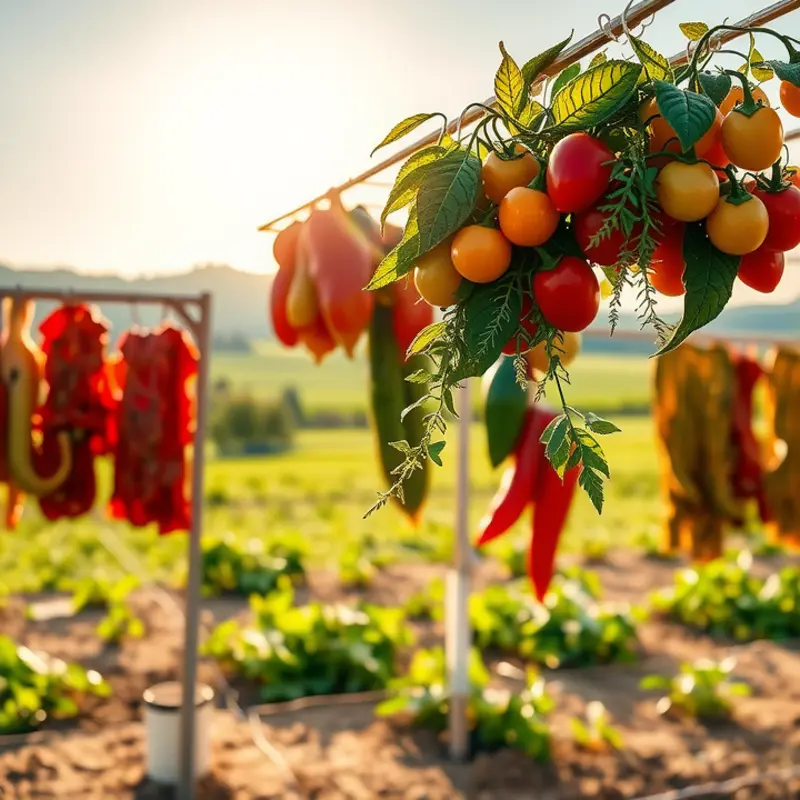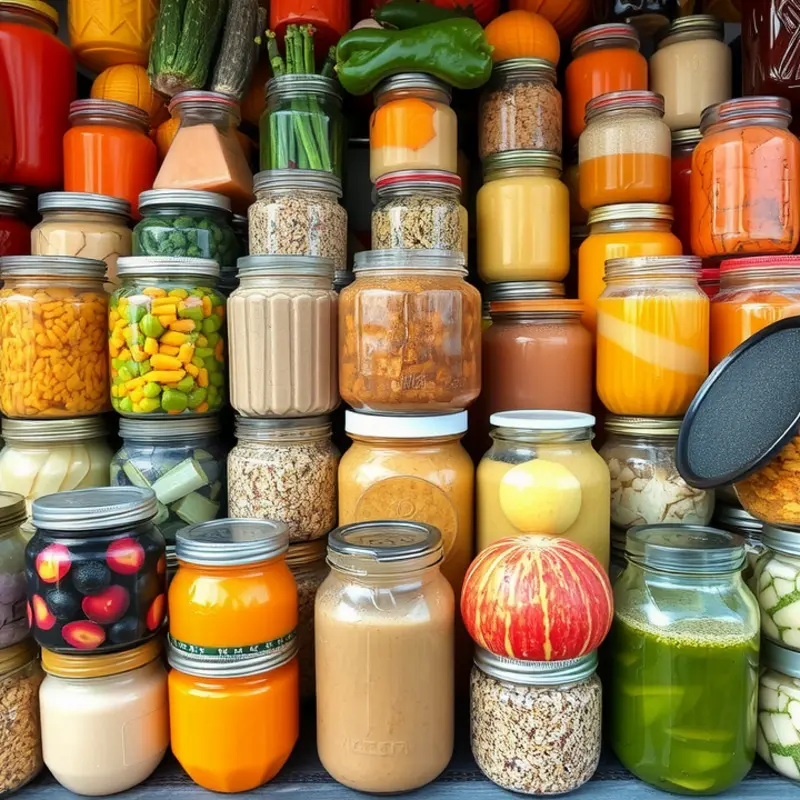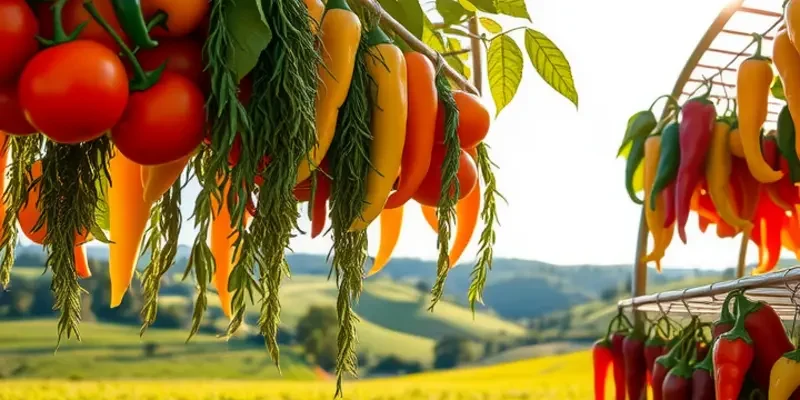Indigenous food preservation techniques are a testament to the resourcefulness of communities throughout history. These age-old practices, passed down through generations, not only extend the life of food but also foster connections to culture, land, and identity. From drying and smoking to fermenting and pickling, each method tells a story of sustainability and respect for the environment. Discover how these diverse culinary traditions continue to influence modern cuisine and inspire food enthusiasts across the globe.
The Art of Drying and Smoking: Ancient Techniques

Across the globe, indigenous cultures have honed the craft of food preservation through drying and smoking for millennia. These ancient techniques not only extend the shelf life of various foods but also enhance their flavors, creating culinary staples that are both delicious and nutritious.
Sun-drying, one of the simplest forms of preservation, thrives in warm, arid climates where the sun’s heat can be relied upon. Mediterranean communities have long preserved their summer harvests by laying tomatoes, peppers, and herbs under the sun. The intense sunlight concentrates flavors, transforming a fresh tomato into a sweet, chewy delicacy that carries the essence of summer into winter months. This method, deeply embedded in the agricultural calendar and cuisine, links people to their environment and seasonal cycles.
In contrast, in the humid and often cold climates of the Arctic, Native Alaskan communities have perfected the art of smoking fish and meats. This process not only prevents spoilage by removing moisture and inhibiting bacterial growth, but it also imparts a distinctive smoky flavor. Smoked salmon, a prized delicacy, is integral to subsistence and cultural traditions. The preservation of food through smoking represents a profound respect for natural resources, ensuring that nothing is wasted during periods of abundance and that communities remain nourished through harsh winters.
In the Americas, the Pueblo peoples harness the sun’s energy to dry corn, a vital staple. This dried corn is ground into flour or rehydrated in stews, allowing these communities to stretch their harvests well past autumn. The Zuni, Hopi, and other tribes have passed down techniques through generations, instilling a deep appreciation for sustainable living and ensuring food security.
In Africa, biltong and jerky represent evolutionary adaptations to both the climate and migratory lifestyles of indigenous herders. The preparation of these dried meats allows for portable, shelf-stable sustenance. Preservation methods are often tailored to local tastes, with a variety of spices and vinegars used to flavor the meat before drying. This practice not only underscores food security but also showcases regional spice profiles and culinary creativity.
To connect more deeply with sustainable practices in food storage, consider exploring methods that ensure both flavor enhancement and resourcefulness. Understanding how different cultures optimize their environments for food preservation can inspire modern culinary approaches. By adopting eco-smart storage techniques, such as those highlighted in this eco-friendly kitchen storage guide, one can efficiently combine tradition with contemporary sustainability efforts.
Ultimately, drying and smoking techniques are much more than methods of preservation; they are testament to humankind’s ingenuity and adaptability. These practices not only celebrate but also reinforce the intimate connection between people and their environment, reminding us of the role culture plays in sustaining community health and heritage.
Fermentation: A Flavorful Journey Through Cultures

Fermentation is a transformative journey that bridges tradition and taste across cultures. This ancient technique not only preserves food but also enriches its flavors, enhancing both culinary and cultural experiences. At the heart of this transformation are microorganisms, tiny engines of change that convert sugars into acids, gases, or alcohol.
Kimchi, a staple in Korean cuisine, is a celebration of fermented vegetables, primarily napa cabbage. It’s not just a dish but a cultural artifact, representing the Korean spirit of resilience and community. Kimjang, the communal labor of preparing and fermenting kimchi, strengthens social bonds as families gather to prepare vast quantities for winter. The precise blend of local ingredients—chili peppers, garlic, ginger—provides not only unique flavors but also supports immune health through natural probiotics.
Similarly, sauerkraut, hailing from Central Europe, features prominently in German and Alsatian diets. Traditionally, cabbage is finely sliced and layered with salt, initiating lactic acid fermentation. This practice dates back centuries, preserving cabbage over long winters. Sauerkraut’s tangy crunch offers more than flavor; it provides a potent source of vitamins C and K, and probiotics, contributing to gut health and immunity.
Beyond vegetables, fermentation extends to beverages like kumis, a traditional drink from the steppes of Central Asia. Fermented from mare’s milk, kumis is rich in probiotics and essential nutrients, supporting the nomadic lifestyles of regions like Mongolia and Kazakhstan. These fermented beverages illustrate an intimate understanding of local resources, utilizing available ingredients to create nutritious sustenance that suits harsh climates.
The versatility of fermentation showcases indigenous ingenuity. It reflects a deep understanding of biochemistry, long before scientific explanations were known. Fermented foods embody survival, adaptation, and the use of nature’s microbial allies to enhance food nutrition and safety.
Fermentation is also a story of global culinary exchange. Techniques spread via trade routes, enriching diets worldwide with new flavors and healthier outcomes. The humble miso paste from Japan, rich in umami, owes its origins to Chinese soy paste brought by ancient travelers. Such exchanges are explored in more detail in this article on culinary influences from global trade.
In every culture where fermentation thrives, it operates within the rhythms of community life. Fermentation not only transforms ingredients; it cultivates connection, creativity, and a shared sense of identity. These techniques, rooted in tradition, continue to evolve, enriching our global culinary landscape with each bubbling jar or aging crock.
Final words
Indigenous food preservation techniques are not just methods; they are cultural expressions that embody a profound respect for nature and a deep understanding of local ecosystems. By valuing these practices, food enthusiasts and culturally-curious individuals can connect to the histories and communities behind these culinary treasures. Embracing these techniques not only enriches our palates but also fosters a greater appreciation for the stories and wisdom that food carries. As we explore and celebrate these traditions, we recognize their invaluable role in sustainable food practices and the preservation of our collective culinary heritage.








